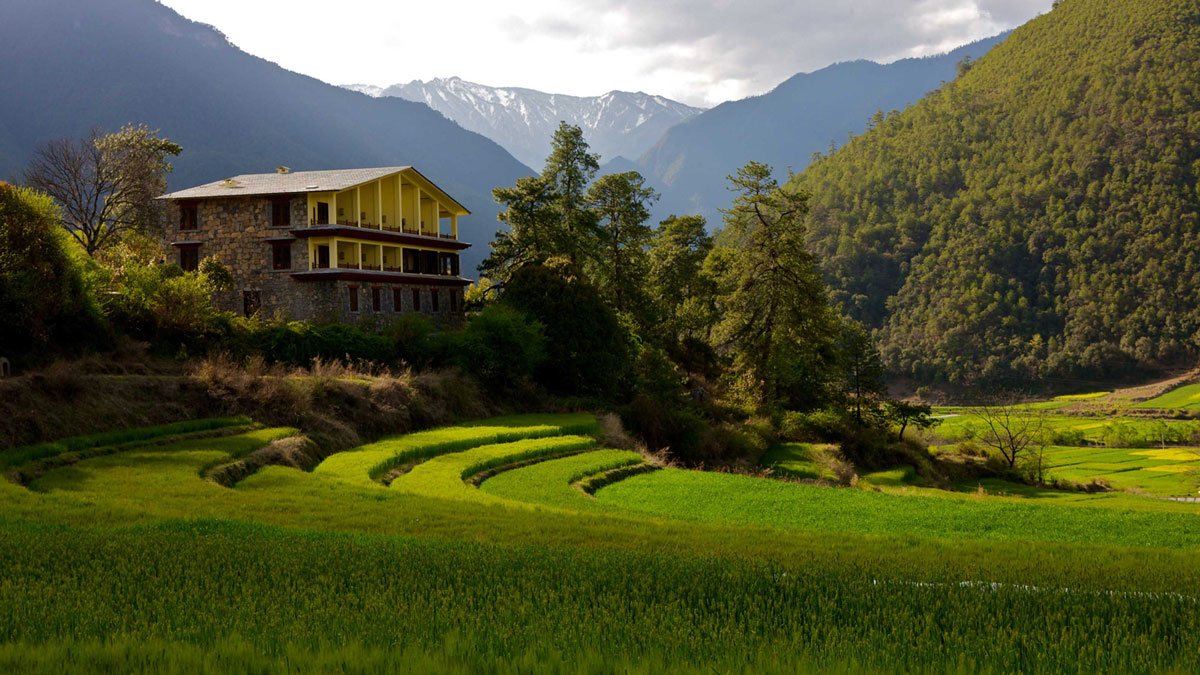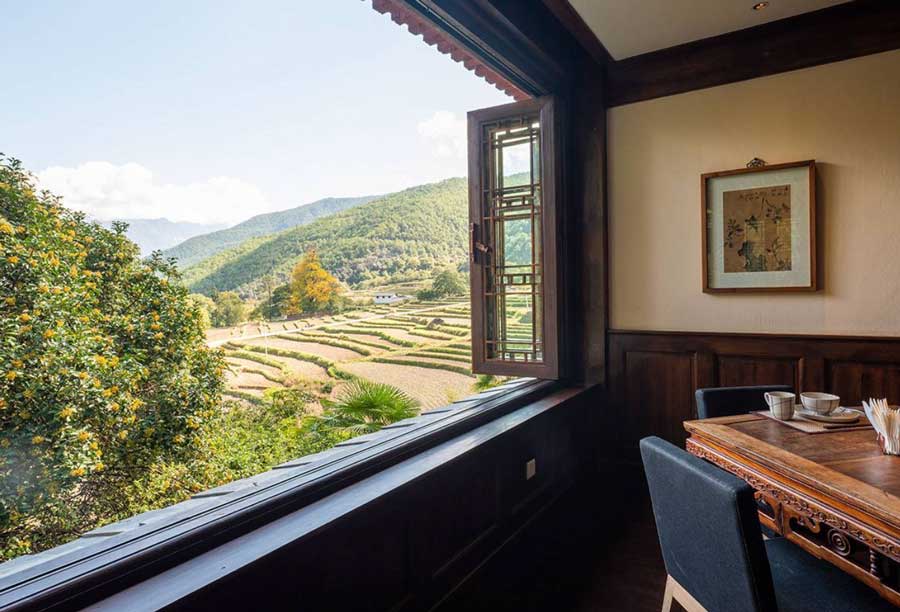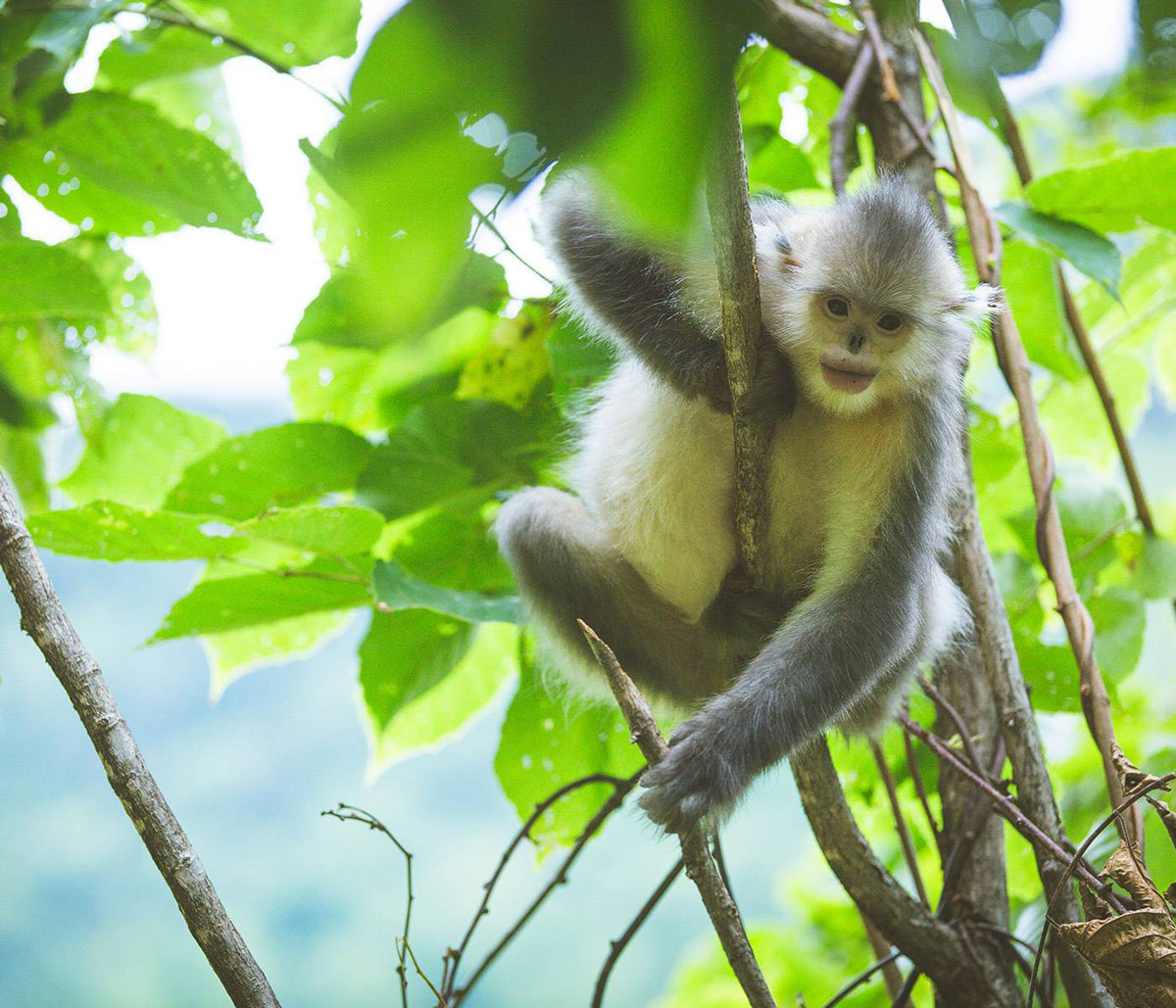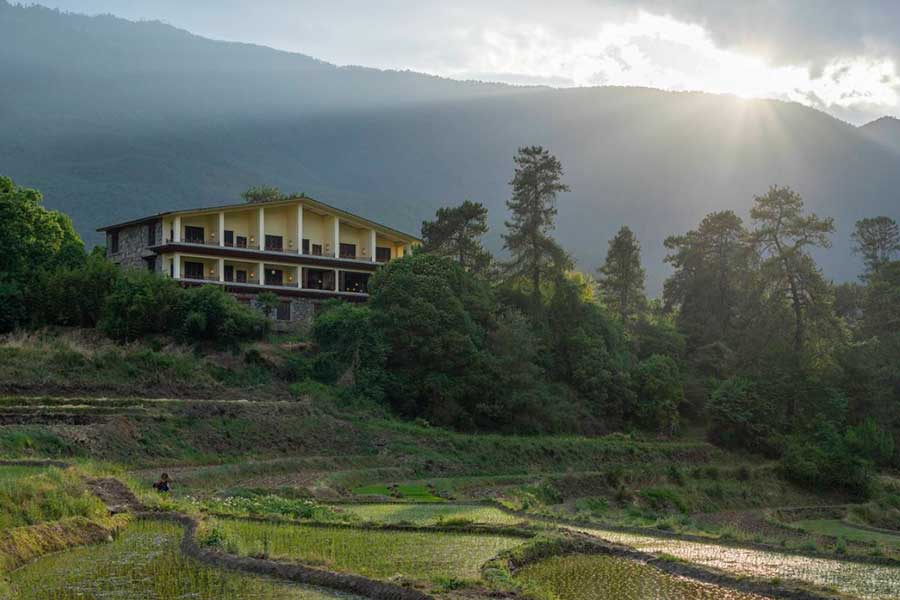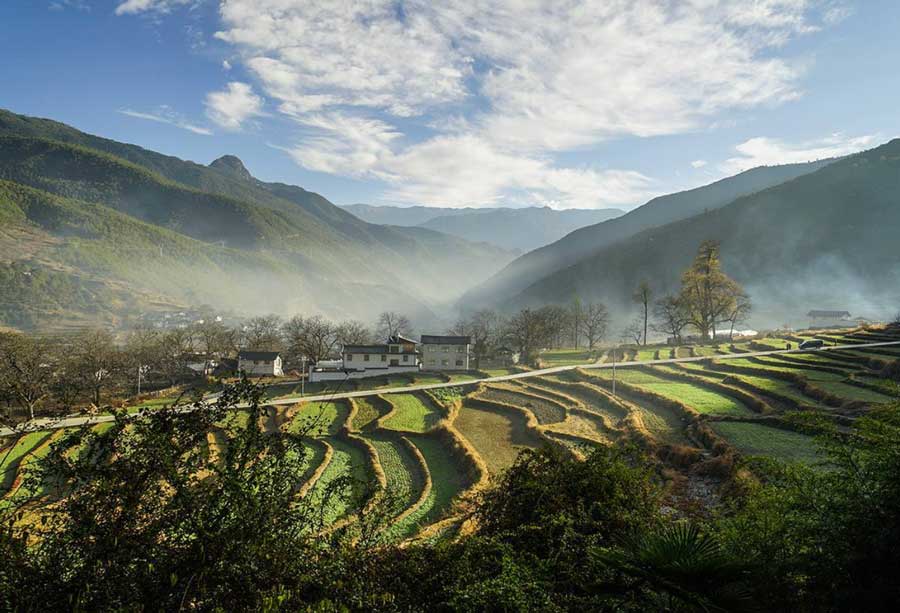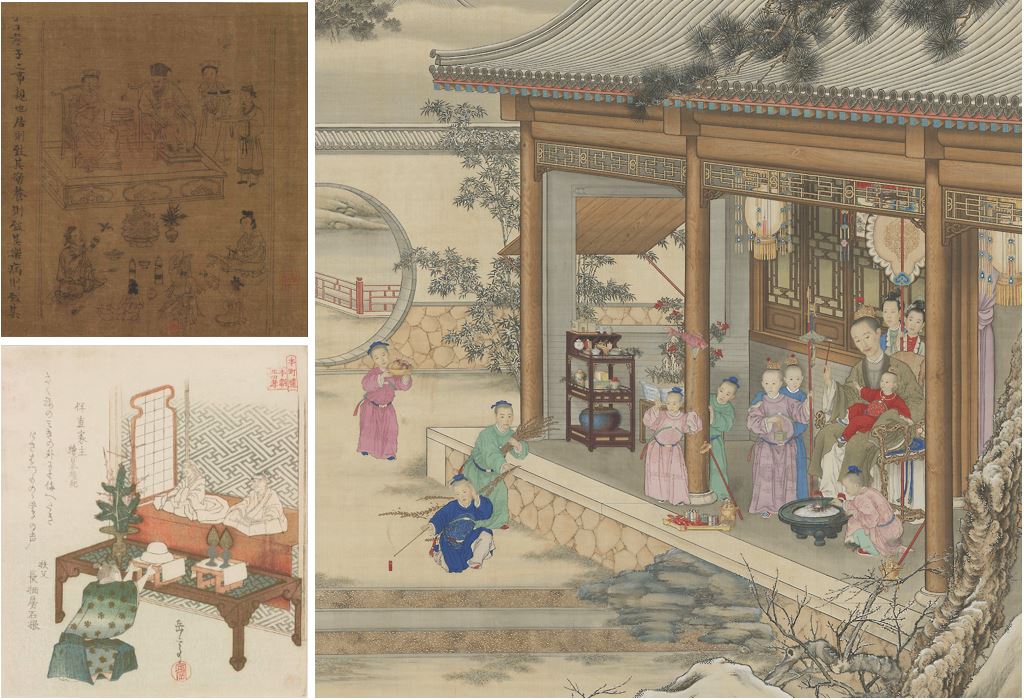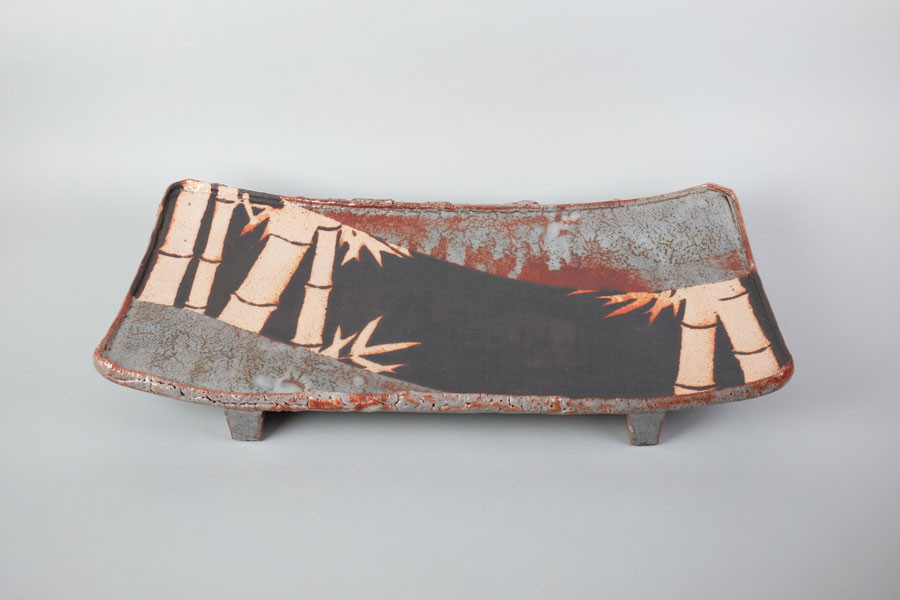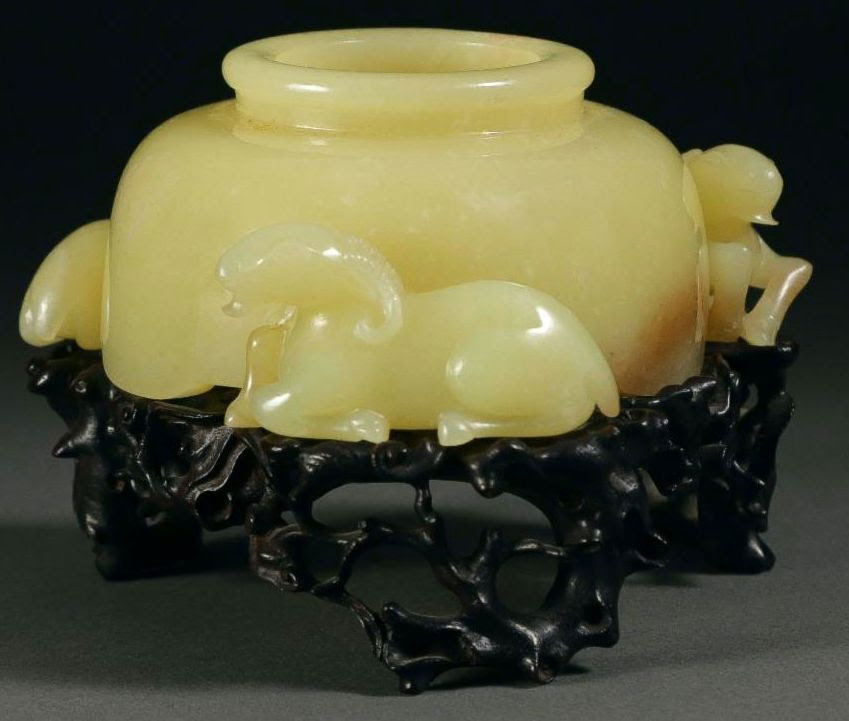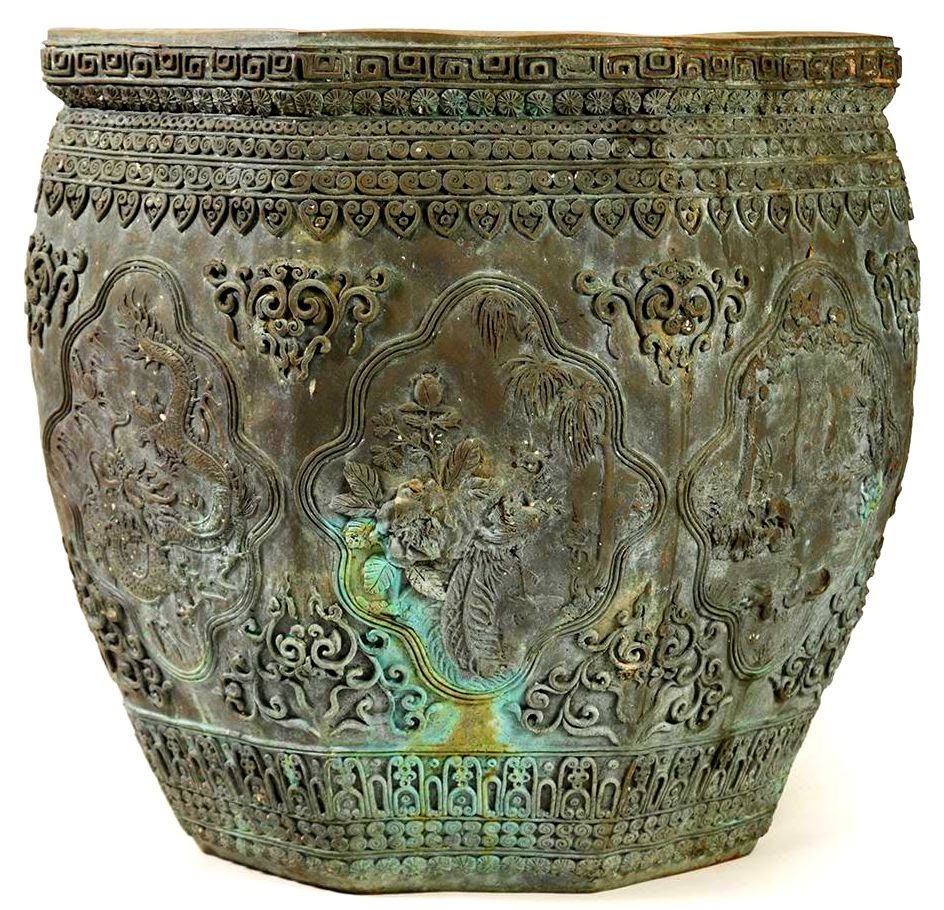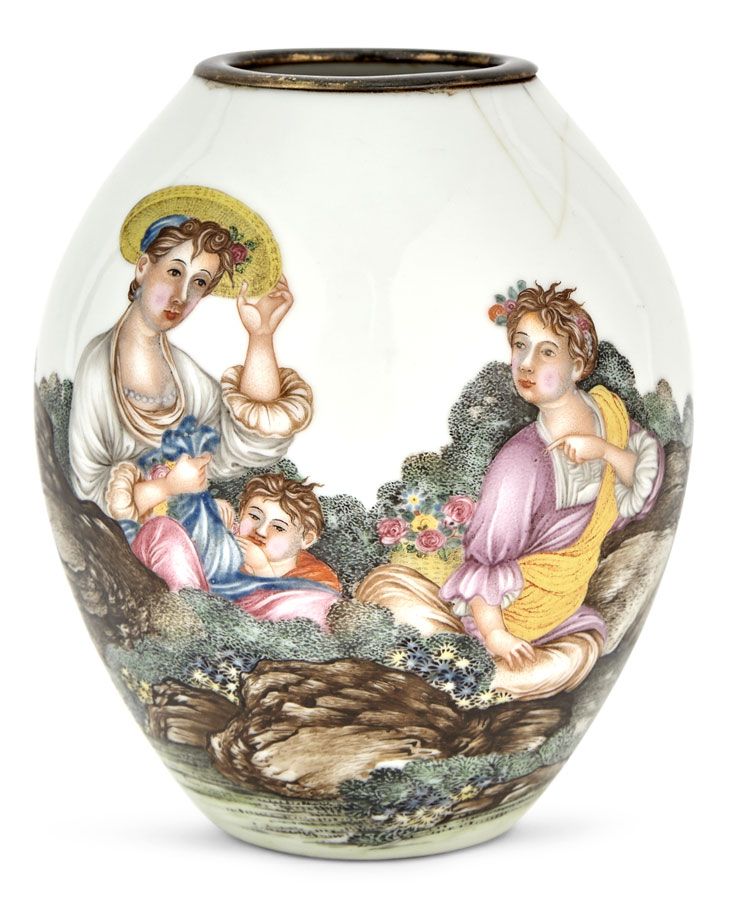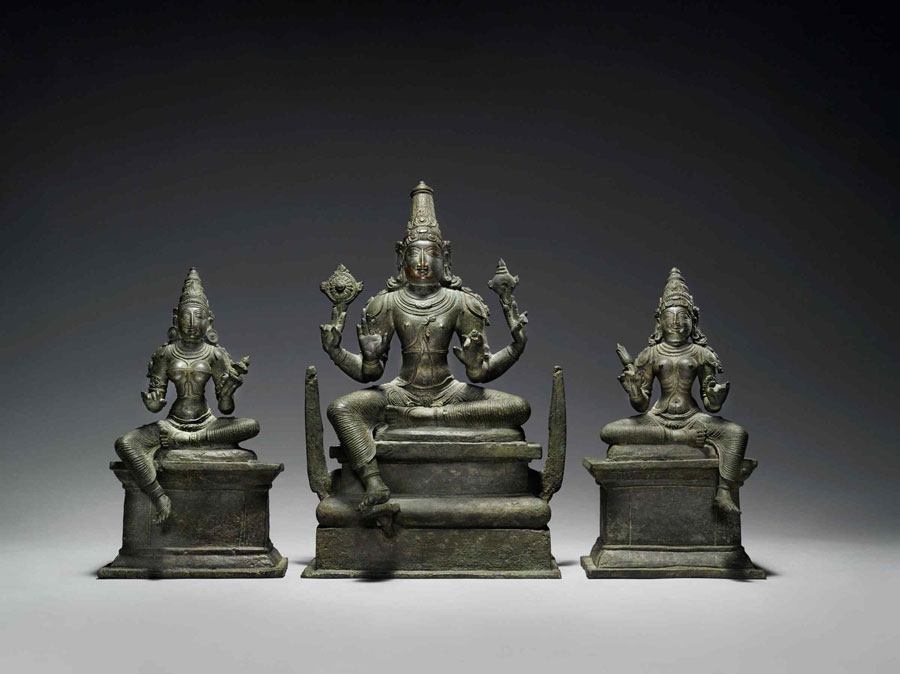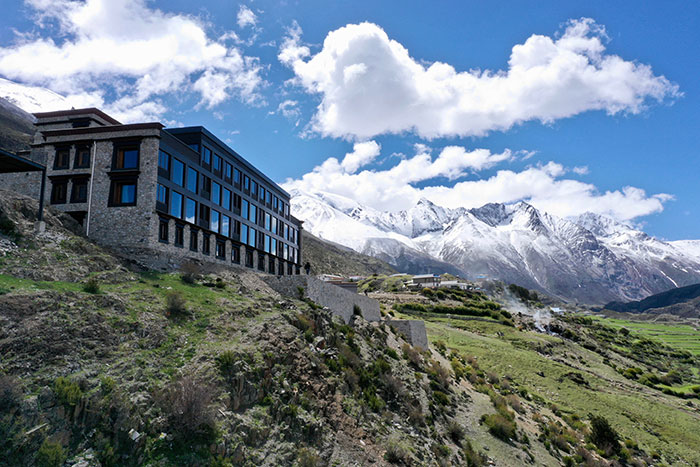A wide array of works from the dealers participating in our Autumn 2021 virtual exhibition was sold. Here are some of the highlights:
Dai Ichi Arts, Ltd.
(top of page) Wakao Toshisada (b. 1933), Shino Glazed Long Platter with Bamboo design, c. Late 1980's, Shino glazed Stoneware, (h) 3.8″ x (w) 22.7″ x (d) 11.2″; (h) 9.8 x (w) 57.8 x (d) 28.5cm.
In the Shino-glazed platter by Wakao Toshisada (b. 1933), the artist recalls a scene from Taketori Monogatari or The Tale of the Bamboo Cutter: the bamboo grove casting long shadows under a milky white moonlight.
Egenolf Gallery Japanese Prints

Kawase Hasui (1883-1957), Sunset at Ichinokura, Ikegami. [Ikegami Ichinokura (sekiyô)]. Japanese Color Woodblock Print. 1928. 26.3 x 38.4 cm.
This print is from the series “Twenty Views of Tokyo.” The sun sets a brilliant red against what are perhaps rows of tea fields and a line of tall evergreen trees.
Oliver Forge & Brendan Lynch Ltd.
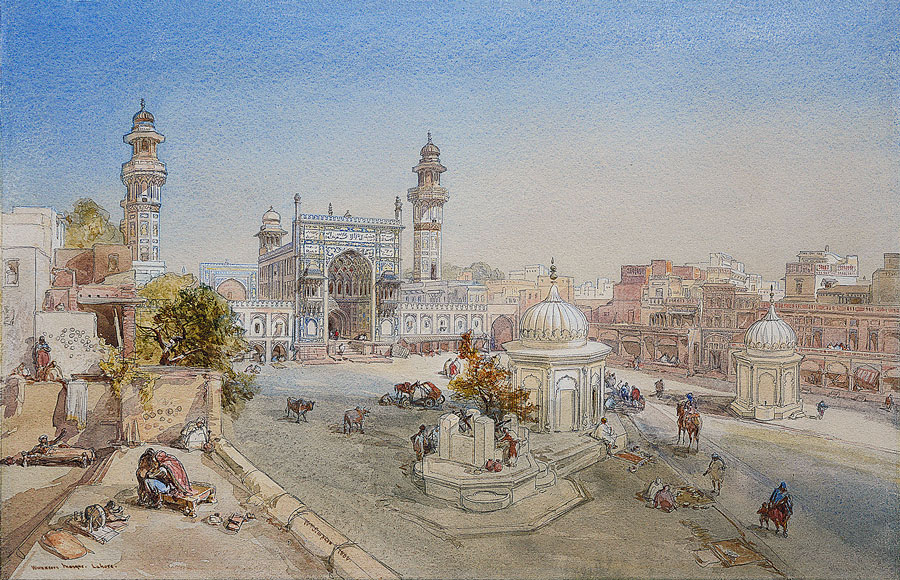
William Simpson (British, 1823-99), The Wazir Khan Mosque, Lahore, dated 1864, Watercolor on paper, inscribed at l.l. Wuzzeer’s Mosque Lahore, signed at center foreground Wm. Simpson 1864, 31.5 by 48.4 cm.; 12 3/8 by 19 in.
One of the nineteenth century’s most accomplished and prolific topographical artists, Simpson travelled widely in India and the Middle and Far East and was patronized by Queen Victoria. His work can be found in the Royal Collection, Buckingham Palace, the Victoria & Albert Museum, London, and the Yale Center for British Art.
Fu Qiumeng Fine Art

Tai Xiangzhou (b. China, 1968), Celestial Tale – The Leaping Dragons in Crystal Sound, scroll, mounted and framed, ink on silk, ca. 2021, Inscribed and signed with one seal of the artist, dated May 18th, xingchou year (2021), 12 2/5 × 55 3/25 in/ 31.5 × 140 cm.
The key to Tai’s practice is his dual concern with modern physics and ancient Chinese cosmology. He is particularly interested in topological phase transition, the process by which physical objects transform between gas, liquid, and solid states.
HK Art & Antiques, LLC
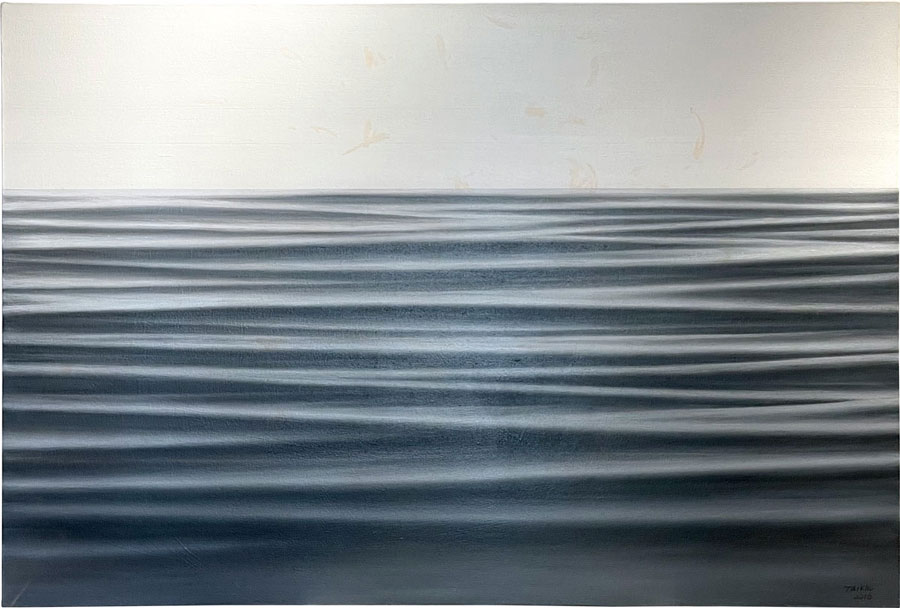
Cho Taikho (B. 1957), Light on Sea 4, 2018, Acrylic on canvas 12.9 x 21.6in. (33 x 55cm.).
This is one of a group of recent paintings by the Paris-based artist, inspired by the sea.
Ippodo Gallery
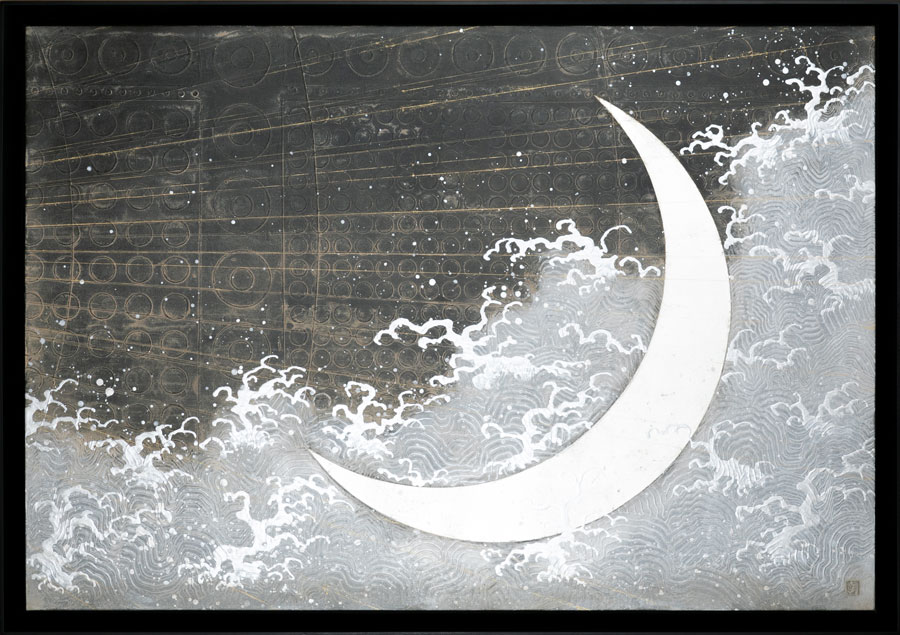
Ken Matsubara (1948-present), Crescent Moon, Painting, H35 x W49 in, H88.9 x W124.46 cm.
Featured worldwide from the Tokyo Metropolitan Art Museum to Paris and Cologne, Matsubara’s paintings are serene, drifting, yet contained and dynamic. From intense brush strokes to delicate texture, each painting represents a return to nature, an appreciation, and consideration of the earth and natural elements.
Kaikodo, LLC
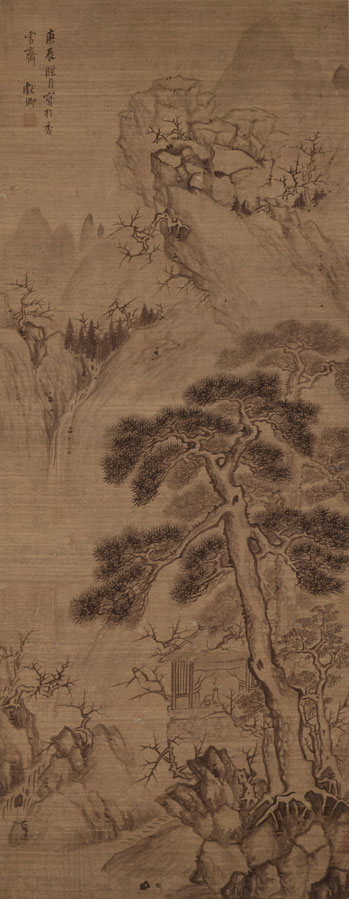
Hu Jing (paintings dated 1609-1640), “Retreat Under Pines” 1640, Hanging scroll, ink on figured silk, 112.0 x 44.6 cm. (44 1/8 x 17 1/2 in.) Inscription: “During the tenth lunar month of the year 1640, painted by Xianqing at the Xiangxue Studio.” Artist’s seals: Hu Jingzhi yin; Wolu
Hu Jing, born in Nanping in Fujian province, trained as a scholar, known for his poetry and calligraphy, became a monk toward the end of his life. The “Retreat Under Pines” is distinguished by the artist’s use of a figured silk as ground for his painting. The juxtaposition here of its subtle pattern with the painted image yields an interesting pictorial tension and rewards close viewing of the painting.
Kapoor Galleries

Vishnu, South India, Tamil Nadu, Vijayanagara period, 16th century, Copper alloy 28 in. (71.1 cm.) high.
Just as those created in Tamil Nadu in prior centuries, this copper alloy sculpture of Vishnu from the Vijayanagara period, 16th century, was both an important temple commission as well as an object of transient worship, as it is fitted for processions with bronze loops and tangs at its base.
Provenance:
Henry Spencers and Son Auctioneers, The Square, Retford, January 1996.
Private New York collection, since the early 2000s.
Joan B. Mirviss LTD

Itō Hidehito (b. 1971) “Space” craquelure celadon-glazed, flattened round sculpture with ridged waist 2021, Glazed porcelain 9 3/8 x 16 3/4 in.
“Space” is one of Itō’s first fully sculptural works. The flattened sphere is, upon closer inspection, a half-rounded base capped by a slightly larger, flattened dome heightened by thick layers of dripping glaze around the ridged waist. The artist’s mastery of glaze is on full display in this, one of his largest works ever, as the glass-like surface reveals a “cracked ice” effect underneath in brilliant blue.
Scholten Japanese Art
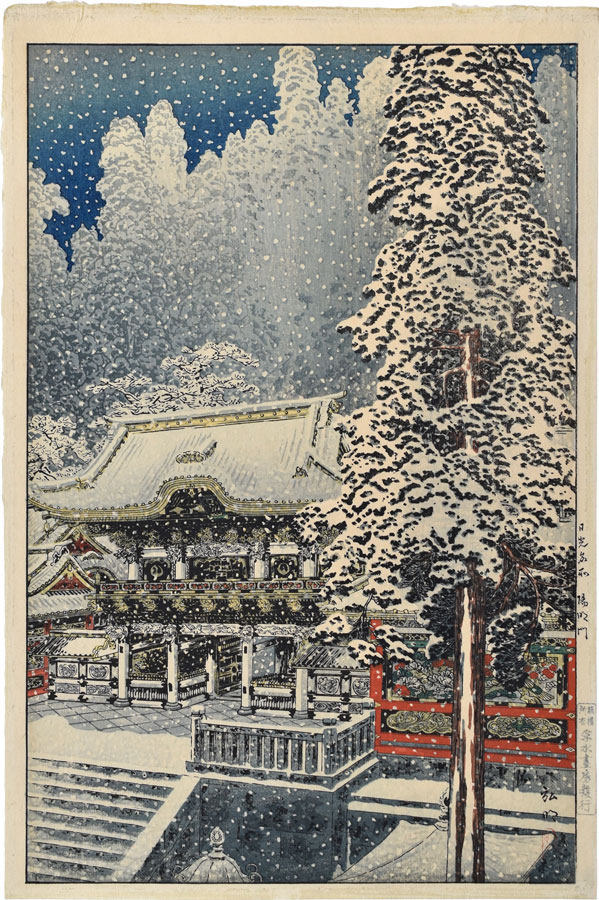
Takahashi Shotei (Hiroaki), 1871-1945, Famous Places in Nikko, Snow, Moon & Flowers, signed at lower right Hiroaki with artist's seal Shotei, with publisher's seal at lower right, (limited edition of 300), ca. 1929, oban tate-e 15 1/2 by 10 1/4 in., 39.5 by 26.1 cm.
The role of Takahashi Hiroaki (Shotei) in the shin-hanga movement is arguably as integral as it has been overlooked. He was one of the most prolific among the shin-hanga artists. This print is from a series published by Fusui Gabo in 1929, Famous Places in Nikko (Nikko Meisho) which included three designs based on the classical theme of Snow, Moon, and Flowers (Setsugekka) and all three designs are quite scarce.
Zetterquist Galleries
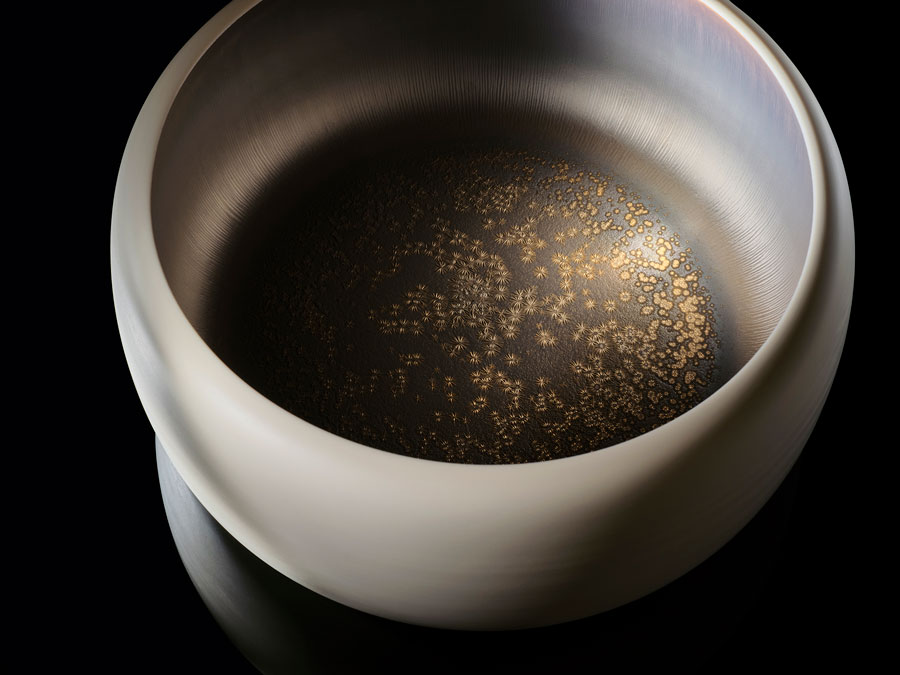
“Starry Night,” porcelain sculpture by Ipek Kotan. It is the largest piece in the group of works presented in the first one-woman New York show by the Turkish-born ceramic artist. She re-fired it several times since 2015 to get the glaze to crystalize in such a way.



